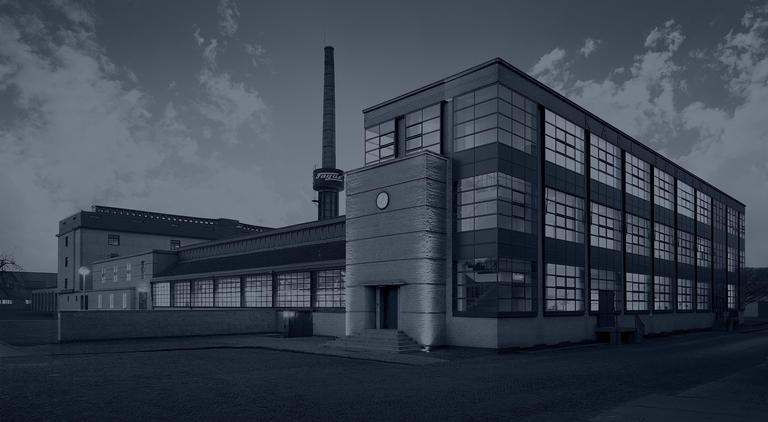In 2011, the UNESCO World Heritage Committee added the Fagus Factory to the world heritage list. It is now one of the 42 world heritage sites in Germany.

As the first building in the trend associated with modern industrial architecture, the Fagus Factory (which was built in 1911) represented the initial work of architect and Bauhaus founder Walter Gropius.
Carl Benscheidt, the forward-looking and innovative company founder, entrusted the young architect Walter Gropius with the task of building a shoe last factory.

The Fagus Factory represents an architectural concept that was the first to consider the requirements associated with light, air and clarity and to make use of glass and steel in a manner corresponding to a brand new construction style. The glass-and-steel structure and the unsupported glazed corners endow the building with a casual elegance that was quite extraordinary at the time compared with other factories of the period.

The factory has been a listed architectural monument since 1946. The entire factory was completely restored between the years 1982 and 2002 and it is now in a better condition than ever before.
The name of the factory is derived from the Latin ‘fagus sylvatica’, which means ‘beech’ or ‘beech wood’. Beech wood is the traditional raw material for the production of shoe lasts.

AN ACCLAIMED MASTERPIECE
Within the framework of the World Heritage convention, UNESCO (United Nations Educational, Scientific and Cultural Organisation) defined ten criteria for the inclusion of sites in the world heritage list. Four of these criteria applied to natural assets, while the other six criteria applied to cultural assets. Sites are considered to be of extraordinary global significance if the World Heritage Committee determines that they fulfil one or more of these criteria.
The outstanding universal significance of the Fagus Factory relates to the modern architecture of Walter Gropius, which makes the factory stand out at the international level.
The structure signifies the innovation associated with the curtain wall, which takes both the vibrancy and the brightness into consideration. It also takes into account the interests of the working world, in terms of productivity and the humanisation of working conditions and combines these interests. The idea that architecture and design constitute a critical factor for the quality of human life was formulated for the first time by the Fagus factory and was handed down to subsequent generations.

